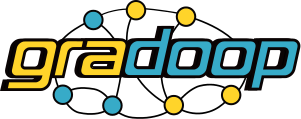-
Notifications
You must be signed in to change notification settings - Fork 88
Unary Graph Collection Operators
This section provides an overview of unary graph collection operators, which operate on a single GraphCollection and return a subset or transformation of the input collection.
| Unary Graph Collection Operators |
|---|
| Selection |
| Matching |
| Limit |
| Distinct |
Given a collection, the select operator filters all contained graphs based on their associated graph head and return a collection with logical graphs that fulfill the predicate.
| Method | Expects | Returns |
|---|---|---|
| select | predicate function (FilterFunction<GraphHead>) for a graph head |
GraphCollection which contains all logical graphs that fulfill the predicate. |
Consider the Social Network example graph, which contains multiple logical graphs with different relations.
This example takes a single graph collection and selects a subset of logical graphs that fulfill the predicate function.
In order to select all graphs that contain edges labeled 'hasMember', we would do the following:
FlinkAsciiGraphLoader loader = getSocialNetworkLoader();
GraphCollection collection = loader.getGraphCollectionByVariables("g0", "g1", "g2", "g3");
// In order to select graphs that contain a certain edge label (in this case, 'hasMember'),
// we need to aggregate a property 'hasEdgeLabel_<label>' to determine if a give label is present or not.
// Since aggregated properties are added to the graph head, it is then possible
// to use the select method to retrieve graphs which are of interest to us.
HasEdgeLabel hasLabelHasMember = new HasEdgeLabel("hasMember"):
// apply aggregation
collection = collection.apply(new ApplyAggregation(hasLabelHasMember))
// select graphs
GraphCollection result = collection.select(hasLabelHasMember))The graph collection result now contains the logical graph g3:Forum, since it is the only one which contains edges labeled 'hasMember'. Or to be more precise: it is the only one with a property 'hasEdgeLabel_hasMember' that is set to true after we applied the aggregation.
tbd.
tbd.
tbd.
